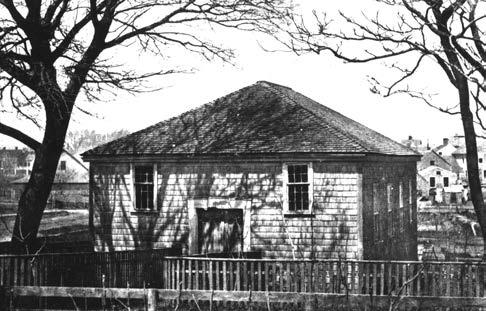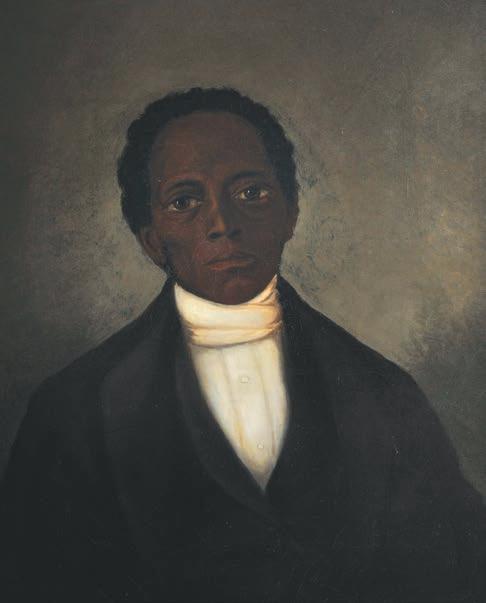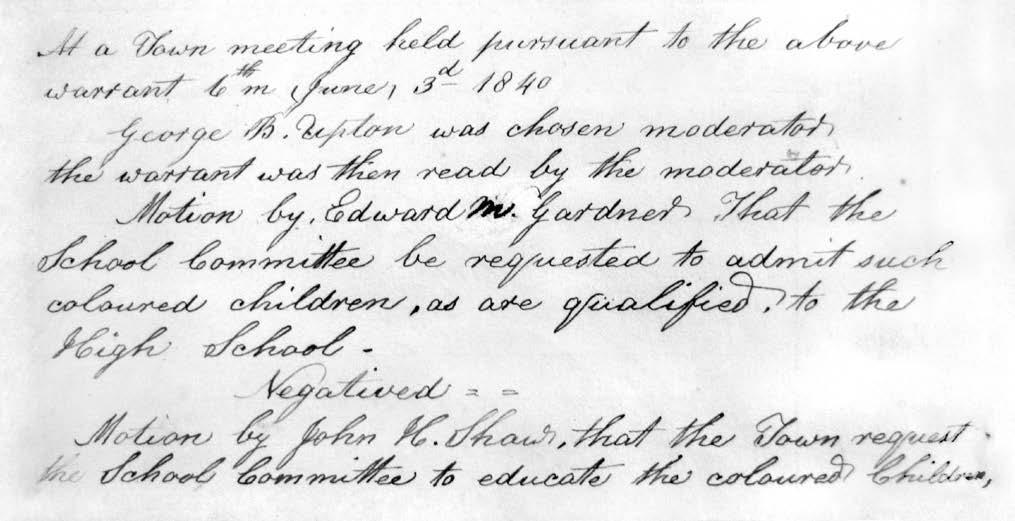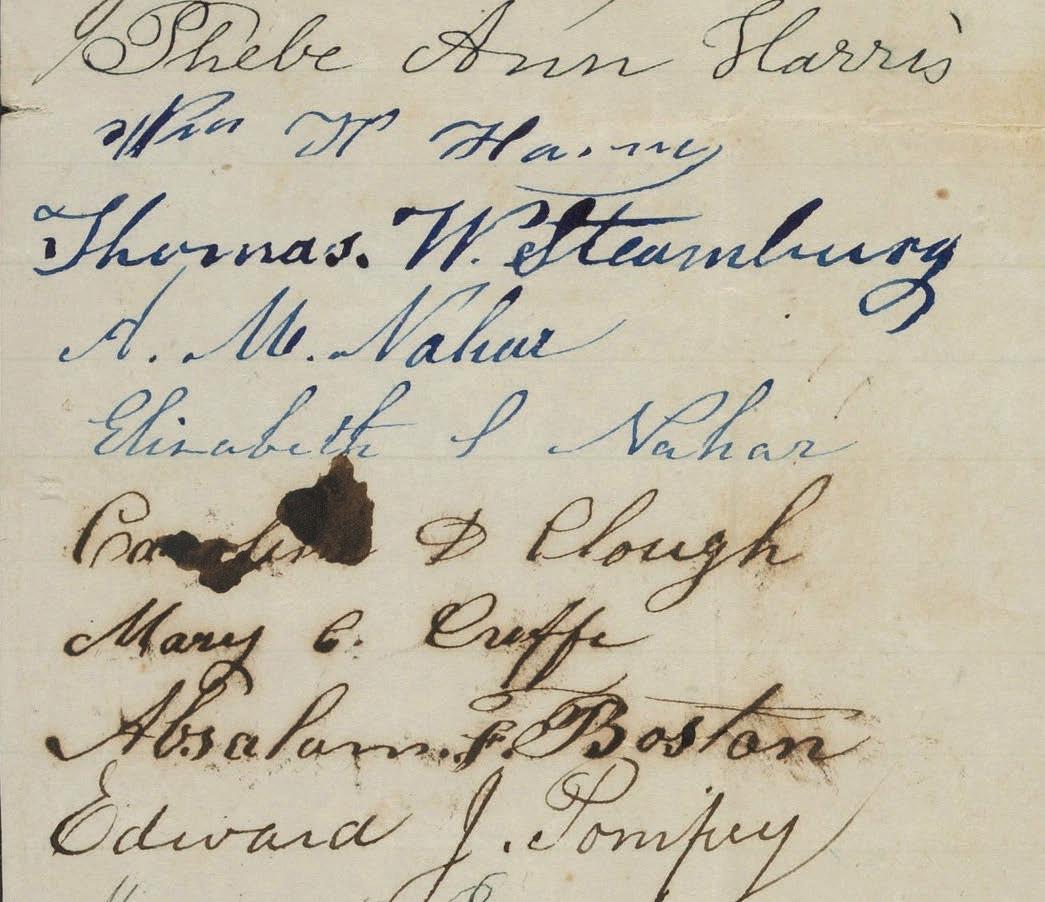
11 minute read
Black Activism Before the Civil War by Barbara Ann White
Black Activism
Before the Civil War
By Barbara Ann White
The Black community on Nantucket protested and mobilized against racism in a wide variety of ways before the Civil War. Their campaigns are familiar to protest movements today. Participated in by men and women, many whose names are unknown, their activism has been overlooked.
One goal of the Black community was to educate their children, cognizant that education was the key to a better life for generations to come. Many were all too familiar with the problem of being illiterate. Nantucket was slow to establish public schools; hence, leaders in the Black community sought funding on their own, reaching off island. They asked the Society for the Propagation of the Gospel Among the Indians and Others (SPG) to fund a school, hopeful because it had established a school on Martha’s Vineyard under the supervision of Frederick Baylies, a white man. Essex Boston, Jeffrey Summons, and Peter Boston asked the SPG for funding based on their Wampanoag heritage, writing, “there are among the coloured people of this place remains of Nantucket Indians, and that nearly every family in our village are partly descended from the original inhabitants of this and neighboring places.” Their letter was successful, and in 1823 the SPG sent Baylies to establish a school for the Black community, but which included a few white children, probably held at the Second Congregational Church. But the people of New Guinea wanted a school in the neighborhood under their ownership and supervision. The African Meeting House, at the corner of York and Pleasant Streets and built in 1824, played a central role. It was used as a school, a church, and place to congregate for a variety of purposes. When the land was deeded to the Meeting House, it the stipulated that the trustees would maintain a schoolhouse—“kept in it forever.” When the town established public schools in 1826, the African School was absorbed into the town’s budget. Fear was ever present in the Black community, especially for those who had fled enslavement. Federal laws supported their return, and Black leaders organized to ensure their safety. Free Blacks were also in danger of being kidnapped and transported to the South when they ventured off island. Black sailors faced danger whenever they docked in a Southern port. The community was alert and ready to resist. The most famous incidence of protecting fugitives from being returned to the South occurred in 1822, when bounty hunters came to Nantucket seeking Arthur and Mary Cooper along with their children, all born in the North. When the men showed up at the Cooper’s house on Angola Street, a defiant group was waiting for them to prevent the family’s seizure. They sought help from several prominent white men known to be sympathetic to their cause. Magistrate Alfred Folger delayed the bounty hunters by engaging them in a dialogue about the legality and authority of their documents. This gave the frightened family of six time to be spirited out through the back of the house disguised as Quakers. They were hidden for several weeks at the home of Ol-
View of the African Meeting House, circa 1880. F3970
“Every man of humane convictions must decide on the protest that best suits his convictions, but we must all protest.” Martin Luther King, Jr., April 4, 1967.
iver and Hannah Gardner on Vestal Street, where Mary Cooper gave birth to a son. Anna Gardner, age six, never forgot how frightened the Coopers were when they were hiding in her house. She went on to teach at the African School as well as in freedmen’s schools in the South during and after the Civil War. Almost three decades later, the Compromise of 1850 included a stricter fugitive slave law. Alarmed, the people of New Guinea organized a vigilance committee to protect fugitives on Nantucket from being targets. Unsurprisingly, Black Nantucketers were involved in the Underground Railroad. An article in 1874 in the San Francisco newspaper The Elevator paid tribute upon the death of Lewis Berry, writing that he had been part of a team on Nantucket with Captain Absalom F. Boston, Captain Edward J. Pompey, and “Messrs. Godfrey, Harris, Young and Borden,” along with five men in New Bedford, a city renowned as a haven for fugitives. Black people exercised rights embodied in the First Amendment to further voice their complaints and concerns, including the right to petition. Dozens of petitions were submitted by Nantucketers during the decades before the Civil War. The majority were submitted to the Massachusetts legislature, largely because of the “gag” rule passed by Congress prohibiting petitions regarding issues involving slavery. It was a form of protest that included men and women, black and white, children and adults.
A petition signed only by Black Nantucketers was submitted by “Absalom Boston and 53 others” in 1839. It called upon the legislature “immediately to repeal all laws in this state which make any distinction among its inhabitants on account of color.” Of particular interest is the signature of 15-year-old Eunice Ross, whose successful examination for admission to Nantucket High School two years later set off a six-year dispute about school integration that split the island community. Most petitions were signed by a cross section of reformers and abolitionists with signatures including Barneys, Gardners, and Macys as well as Pompeys, Rosses, and

Portrait of Arthur Cooper, 1825-35. Sarah (Sally) Gardner (1799-1862). Gift of Eliza Ann King, 1899.131.1.
Bostons. One issue which prompted a number of petitions concerned adding territories, such as Florida and Texas, to the United States because it would increase the power of the slave states in Congress and open up more land to human bondage. The largest petition from the island was submitted in 1839 when an astonishing 773 Nantucketers pleaded for the abolition of the slave trade in Washington, D.C. Petitions related to discrimination included one in 1842 which protested inequities on the railroads “on the sole difference of Colour.”
The issue, however, that spurred the most petitions concerned Nantucket’s long refusal to admit Eunice Ross to the high school and the restriction of Black children to a one-room schoolhouse built on York Street. (The African Meeting House denied the town use of their building once the town’s segregation policy became clear.) Tempers flared when the school committee, dominated for one year by abolitionists, ordered the schools integrated against the explicit vote of the annual town meeting. The integration precipitated a backlash, and the next year, 1844, segregationists were overwhelmingly elected to the committee. Within a week, Black students were publicly ejected from the two grammar schools and escorted back to the school on York Street.
One of the boldest examples of Black activism occurred in response to their children’s expulsion. Rather than send the children back to the segregated York Street School, the Black community boycotted the school system entirely, a very early example of that method of protest. The boycott of almost two years was so successful that it left the York Street School vacant, forcing the teacher to give “lessons to bare walls and empty benches.” The school committee reluctantly sent white children to the school to keep it open. Volunteers taught some Black children at a rented schoolroom. As the boycott dragged into its second year, students trickled back in as parents did not want to sacrifice their children’s learning. It seemed that the town had won the battle to segregate the schools. The next step that was taken was to take the issue to the Massachusetts State House. “Edward J. Pompey and 104 others” from the Black community submitted the first of four petitions to the legislature testifying to the urgent need for a law ensuring all children an equal right to public education. The Pompey petition claimed that conditions on the island were similar to the “insults and outrages upon their rights” that could be found in a jail in South Carolina. They wrote that their children needed protection from “School Committees and those who assemble in town meetings.” Two petitions from white Nantucketers in support of the Pompey petition followed. The fourth petition submitted in support of integration was from Eunice Ross, who told the story of the refusal of the town to admit her to the high school even though she had been “found amply qualified.” Their petitions were successful, and Massachusetts passed a ground-breaking law in 1845 guaranteeing the right for children to attend any public school. The hard work of fighting the town had borne fruit. Those petitions were not the first time that Black Nantucketers exercised their rights to those embodied in the First Amendment – freedom of speech, press, and assembly. In February 1842, for example, a community meeting at the Zion Methodist Episcopal church was called to protest school segregation. A 1,622-word Address to the School Committee and Other Inhabitants of Nantucket was composed. The address stated that Massachusetts laws did not recognize racial distinction in education. Printed in the Inquirer, the address referred to their community as “oppressed,” writing that the school issue was one of other “wounds” it had suffered for “some years.” They expressed a strong desire to be part of the mainstream as “citizens of this great republic; our veins are full of republican blood,” and ended with the hope that the time was “not too far distance when…this republic will proceed to make its distinctions in society on just and reasonable grounds, not according to the color of skin.” This example was the longest letter to the newspapers, but there were others written over the years about a variety of injustices. The Black community organized political organizations which paralleled those in the community at large. They organized the first abolitionist group, the African Society at least as early as 1829 – its aim to work to end slavery and gain equal rights for all.

The first motion to integrate Nantucket schools at an annual town meeting, made by Edward M. Gardner on June 3, 1840. His motion was “negatived.” Nantucket Town Records.
The white community organized abolitionist groups not long afterward. The women of Nantucket organized an integrated group at least by 1841. That year, the Nantucket Women’s Anti-Slavery Society stopped meeting at the North Congregational Church because the church had put “impossible” conditions on the group by requiring it to ban their Black members. The women offered a compromise by suggesting that the Black women sit separately, but that compromise was rejected by the church. The women’s organization wrote, “…our object is to improve and elevate…not to lend our aid…in oppression.” There were two Black churches in New Guinea, both gathering places for political meetings. The earliest reference to “a colored church” was in 1821, when the Inquirer reported a room had been “fitted up for the purpose.” The African Meeting House served as a Baptist church until 1888. The Zion Methodist Episcopal Church was built in 1832, located on what is now Upper York Street, down the hill from the windmill. In 1838, a letter from an anonymous white man described what he observed on the Fourth of July at that church. An anti-slavery speaker, he wrote, spoke to about 150 people that day. The author noted that Independence Day was no cause for celebration—“no peace, no liberty for the colored man in these Independent States...” Black men also ran for political office, and, while none were elected, several persisted over several years, putting their names forth. The two most influential citizens of New Guinea were the whaling captains Absalom F. Boston and Edward J. Pompey, who ran for various offices. The first instance was when Absalom Boston ran for the Board of Selectmen in 1839, earning just one vote. He also ran that year to be one of 20 fire wardens from a field of 52, again garnering one vote. In 1842, when the school committee was in the hands of hard-line segregationists, an astounding 56 men ran for the 13 positions. Ten were Black—including Edward Pompey who got 55 votes. James Ross, father of Eunice, and eight other Black men earned votes in the single digits. The following year, Absalom Boston, Edward Pompey, and James Ross ran unsuccessfully to be one of the town assessors. In November of the same year, Edward

Segments of the 1843 petition to the Massachusetts legislature from Nantucket’s black population protesting segregation on the states railroads. Digital Archive of Massachusetts Anti-Slavery and Anti-Segregation Petitions, Massachusetts Archives, House Unpassed Legislation, 1843. Docket 1230A, SC1/Series 230, Petition of Nathaniel A. Borden. Harvard Dataverse, V 5.
Pompey received 39 votes to represent Nantucket in the state Senate. (Maria Mitchell’s father was elected with 638 votes).
Finally, the Black community availed itself of the court system, most significantly in 1845, when it seemed that school integration would be forthcoming after the passage of the new law. However, Nantucket chose to ignore the law. Fortunately, the law granted parents the right to sue their towns for damages, which is exactly what Absalom Boston did, filing suit on behalf of his daughter, Phebe Ann, one of the children who had been ejected from a grammar school the previous year. In September 1845, a special town meeting convened to decide how to proceed against the suit and voted to defend itself. A month later the suit was recorded in the records of the Court of Common Pleas which noted that the case had been transferred to another court. Meanwhile, schools continued to be segregated. At the next annual town meeting, the school committee argued that it was improper “to agitate this exciting question” until the Boston case was decided. But, the town re-elected abolitionists to the school committee and the schools were re-integrated within one week, putting the issue at rest and eliminating the need for the suit.
These examples provide ample evidence that Black Nantucketers were politically active and availed themselves of multiple strategies to advance their quest for abolition and civil rights.




